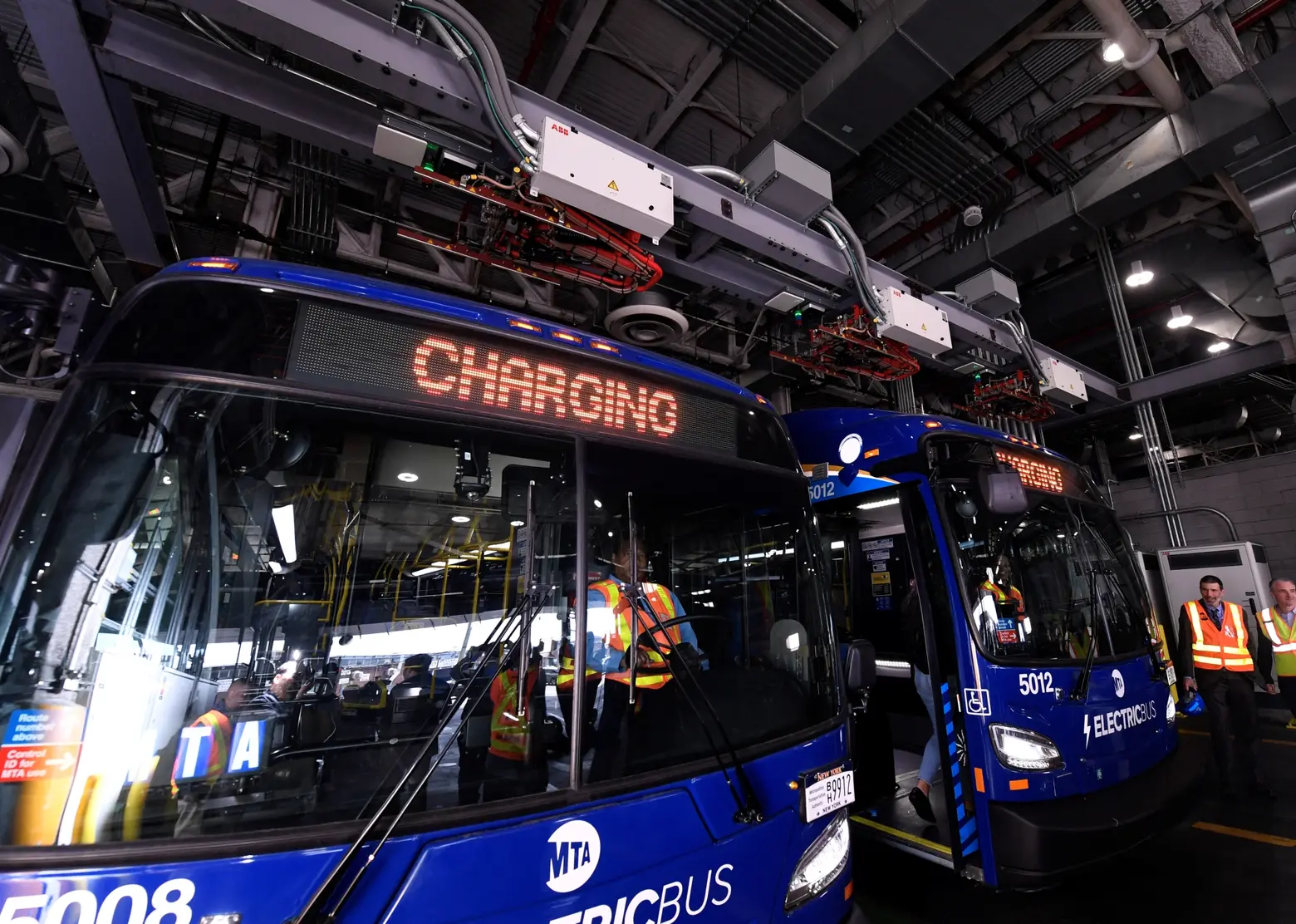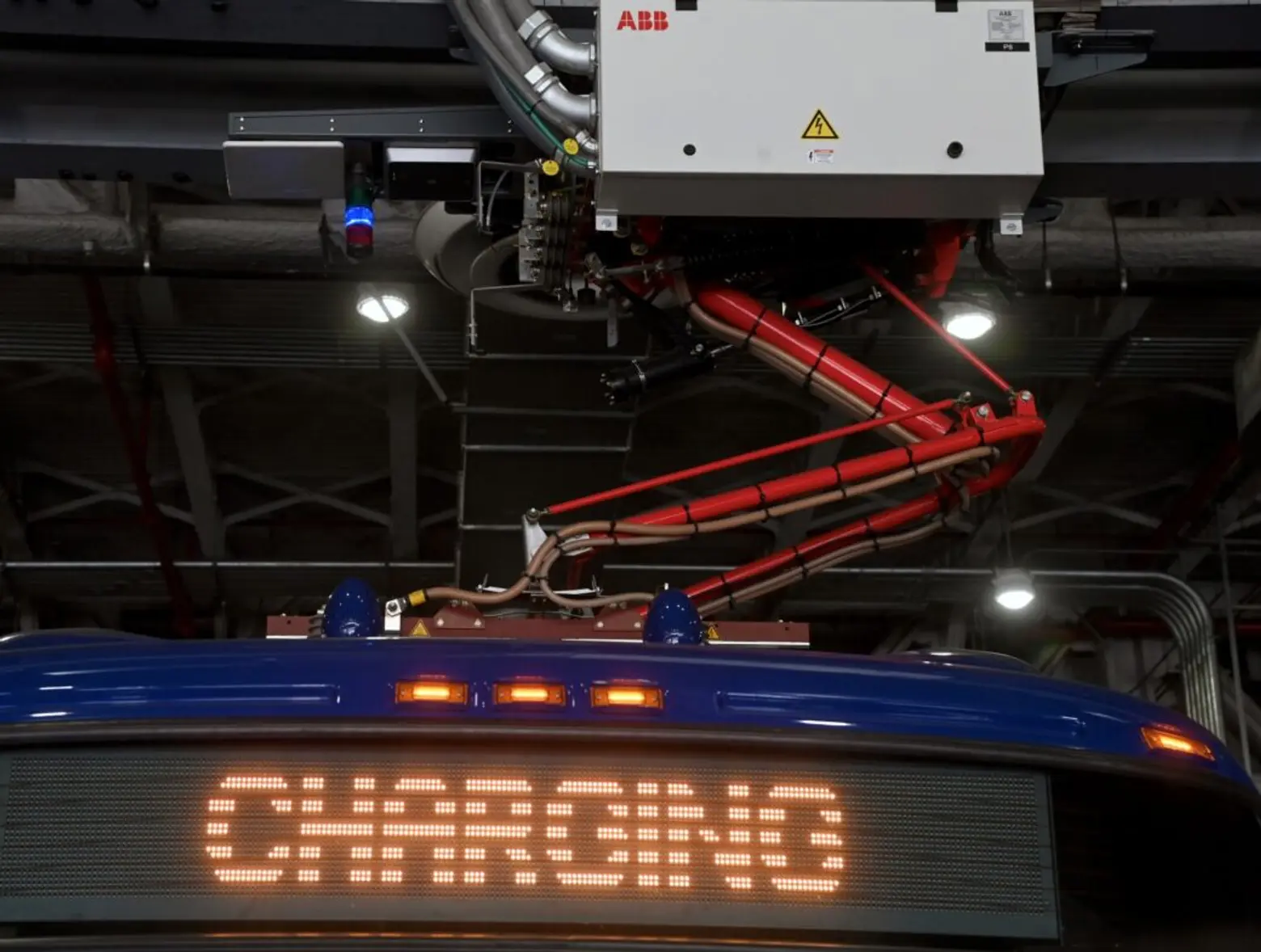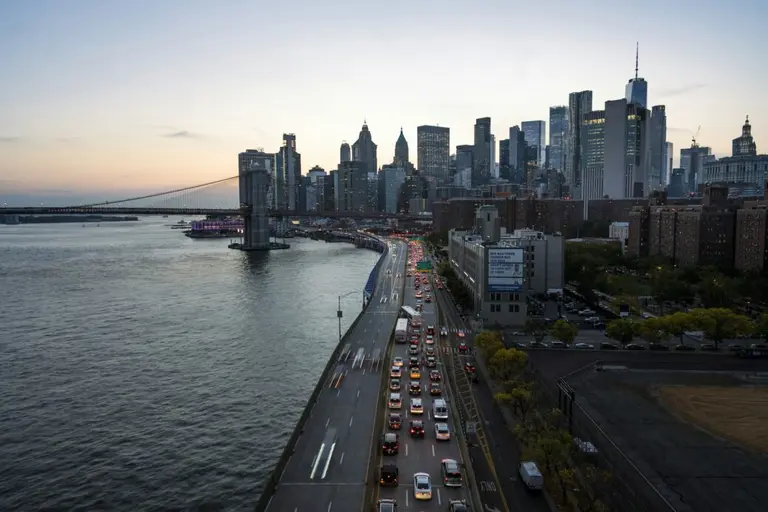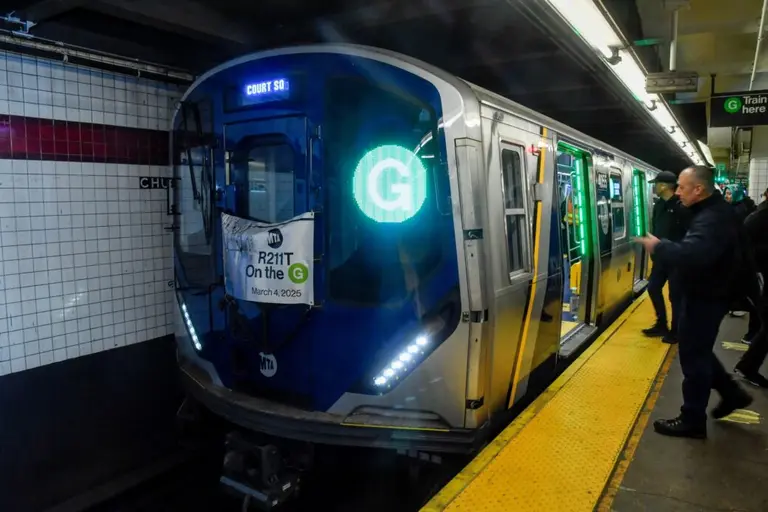MTA rolls out 60 electric buses for Queens, Brooklyn, and Staten Island

Image courtesy of Marc A. Hermann / MTA on Flickr
Dozens of new all-electric buses will soon hit the road in Queens, Brooklyn, and Staten Island. Gov. Kathy Hochul on Tuesday introduced a fleet of 60 electric buses that will operate on routes in neighborhoods most vulnerable to poor air quality, according to a press release. The buses are part of the Metropolitan Transportation Authority’s goal of operating a 100 percent zero-emission bus fleet by 2040.

Of the 60 buses in the order, 16 will go to the Grand Avenue depot in Maspeth, home to the B24, B32, B39, B47, B48, B57, B60, B62, and Q59 routes, 12 will run from the Charleston depot on Staten Island, 10 from the Michael J. Quill depot in Manhattan, and 22 will operate out of the East New York depot, as the Daily News first reported.
“For generations, unchecked fossil fuel consumption and emission production has had disastrous consequences on communities across Queens, especially our most historically marginalized neighborhoods,” Queens Borough President Donovan Richards said.
“But with today’s rollout of 60 new electric buses, we’re taking a major step toward correcting that injustice. Thank you to the Hochul administration and the MTA for their steadfast commitment to building out a fully electric bus fleet, as we work to preserve our environment and protect our families in the process.”
Funding for the new buses comes from nearly $70 million provided by the Federal Transit Administration, including approximately $20 million from the Bipartisan Infrastructure Law.
The buses are equipped with advanced traction systems that allow them to recover up to 90 percent of energy while braking. This technology reduces wear and tear on brakes and ensures maximum energy efficiency.
Alongside the new fleet, the MTA and New York Power Authority announced the development of infrastructure to support zero-emission bus fleets. This includes 17 new bus charging stations at the Grand Avenue Bus Depot in Queens.
An additional 46 stations are under construction at the Herkimer lot in East New York, Brooklyn, and at the Charleston facility in Staten Island, with completion expected by the end of the year.
The charging stations, known as “autonomous pantograph dispensers,” dispense energy through roof-mounted arms that connect seamlessly with buses parked underneath.
Additionally, an on-street pantograph station that will give buses quick recharges between daily runs is nearly complete under the Williamsburg Bridge Plaza in Brooklyn.
A $188 million second phase will install 220 more overhead pantograph chargers at the Grand Avenue depot and four other bus depots in Queens, Manhattan, the Bronx, and Brooklyn. Several depots will also require electric distribution upgrades.
The MTA is working with Con Edison to source new power for bus charging. To prepare bus depots for electric charging, specific lanes for electric buses and infrastructure for overhead pantograph dispensers must be installed. These technologies ensure buses are always ready for service.
The MTA expects the next shipment of 205 electric buses in late 2025. The transit agency is currently negotiating another option to acquire an additional 265 battery electric buses at six depots starting in 2027, for 11 total depots.
The MTA hopes to transition to a 100 percent zero-emission bus fleet by 2040, which would prevent 500,000 metric tons of greenhouse gas emissions yearly.
“Every mile on these buses is a mile run less on fossil fuels—a victory every day for sustainability,” MTA Chair and CEO Janno Lieber said. “As the largest public bus system in North America, we are leading the way to a greener future, revolutionizing public transportation, one electric bus at a time.”
Since 2019, 15 electric buses have been in operation across the five boroughs.
“These new electric buses will play a key role in ensuring New Yorkers can get to where they’re going safely and sustainably,” Hochul said. “Zero-emission buses are becoming the hallmark of our transit systems, demonstrating the importance of building healthy, environmentally friendly cities.”
RELATED:




























